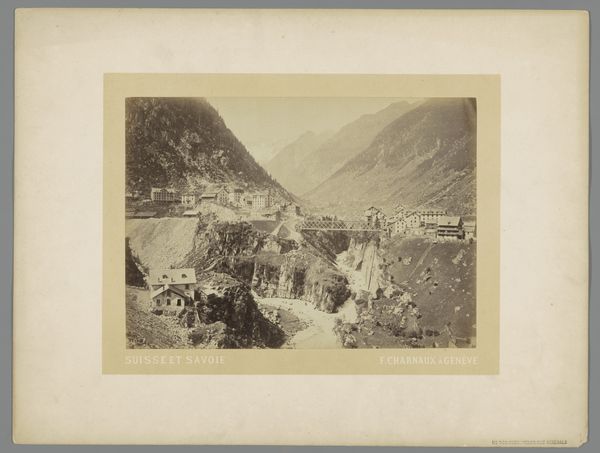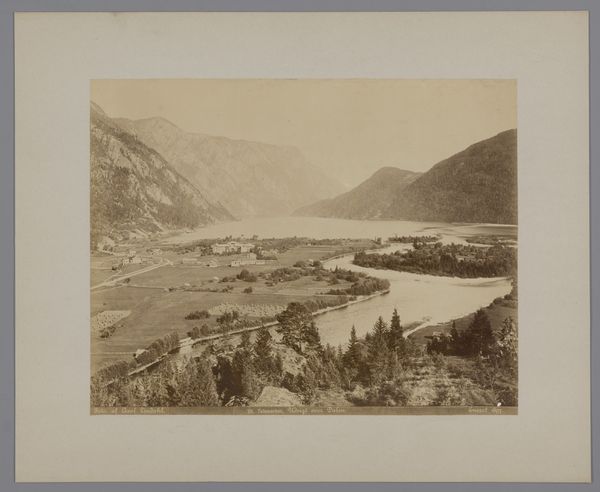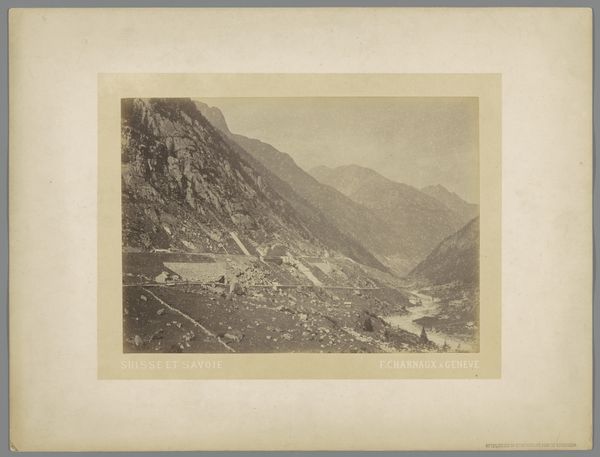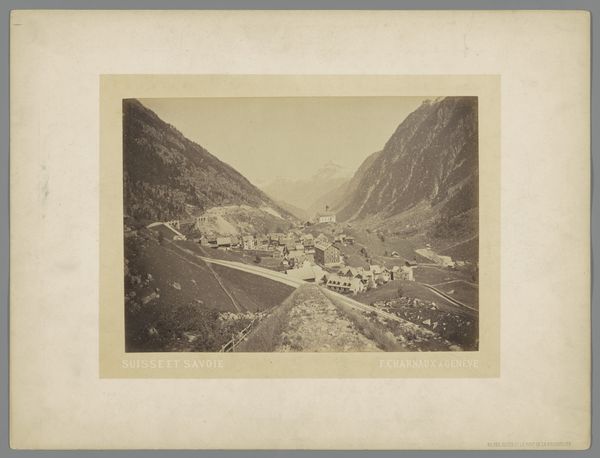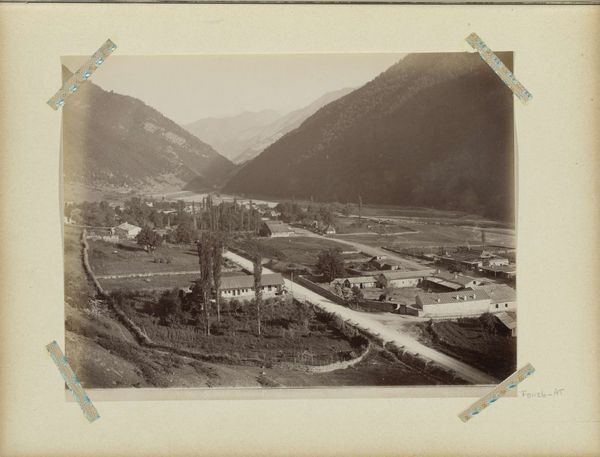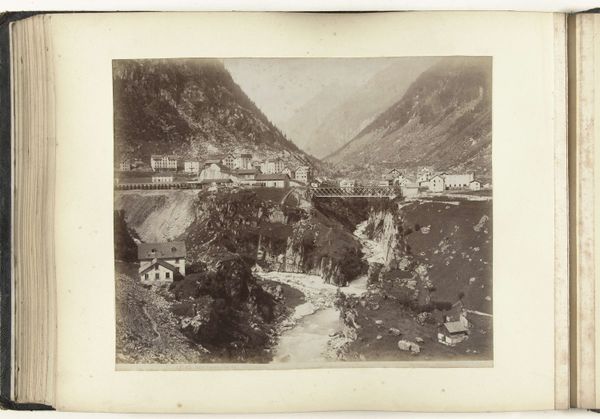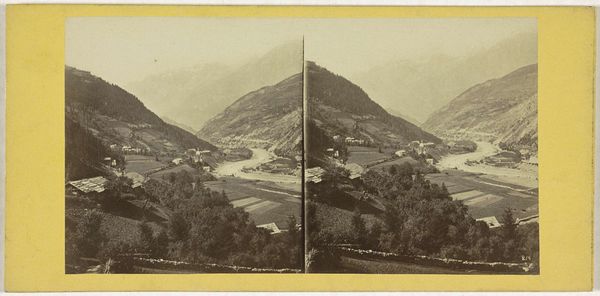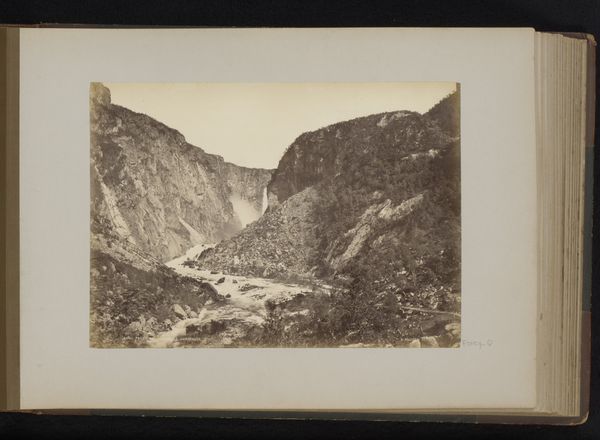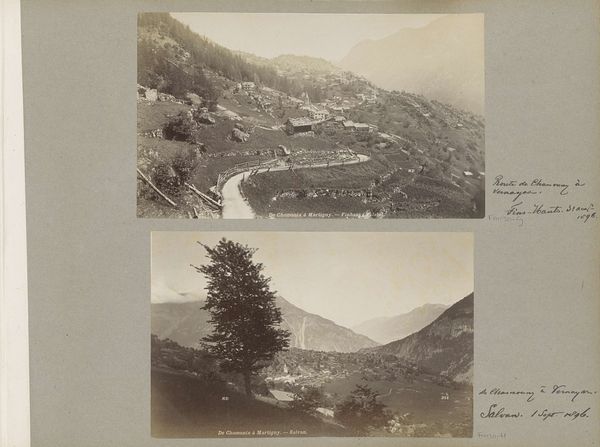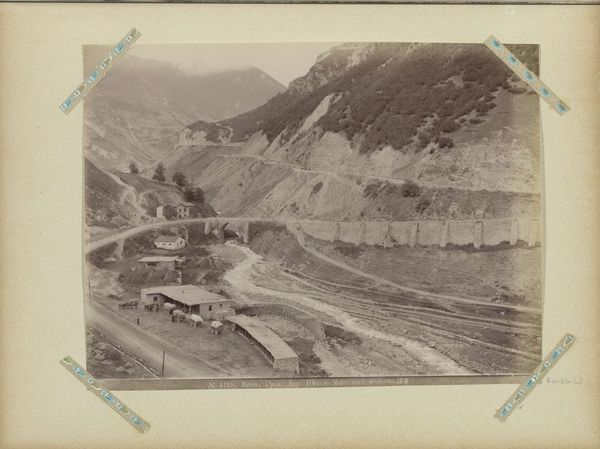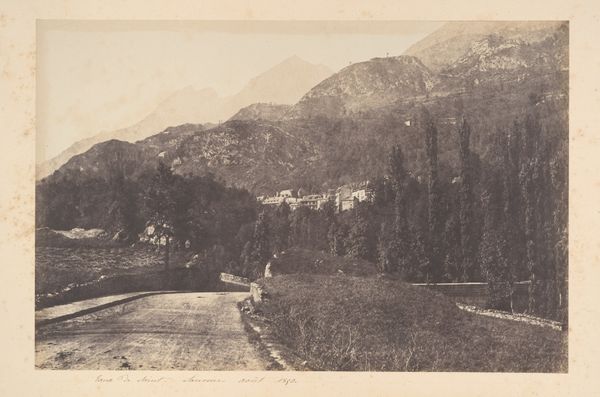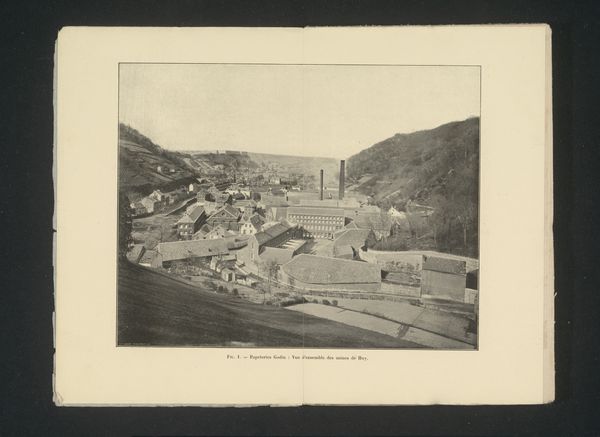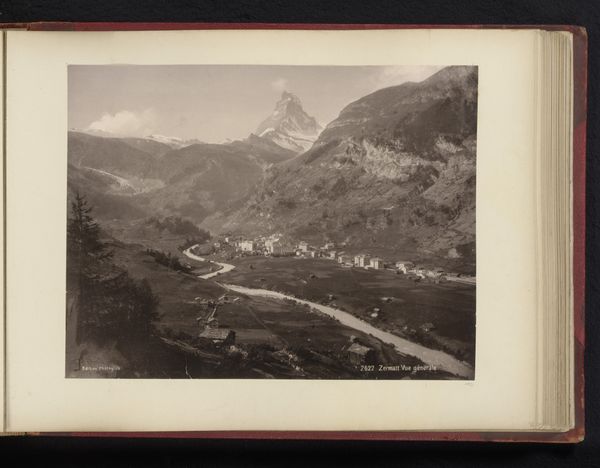
photography, gelatin-silver-print
#
pictorialism
#
landscape
#
photography
#
mountain
#
gelatin-silver-print
Dimensions: height 320 mm, width 420 mm
Copyright: Rijks Museum: Open Domain
Curator: This is Florentin Charnaux's gelatin silver print, "View of Wassen in Uri, Switzerland," created sometime between 1870 and 1890. What's your initial take on it? Editor: A striking scene. Those mountains almost cradle the village; it feels very much like a snapshot of nature enveloping humanity. There’s a clear juxtaposition between the looming, rugged landscape and the small, neat structures built within it. Curator: Precisely. Think of Switzerland at that time. The growth of tourism was massively influencing even remote areas. Photography played a pivotal role, presenting these grand landscapes as destinations, turning nature into a spectacle. Editor: So it’s about framing nature, but also selling it. The carefully placed buildings almost act as a mediator between us and the sublime terror of untouched nature. Curator: Exactly. Notice the infrastructure present - the road, and what appears to be a tunnel being constructed. The very act of documenting this vista through photography represents a similar conquering - not of nature itself, but of the perception of nature. It's about control and accessibility. Editor: Symbolically, the tunnel feels key here. It is a visual symbol of human effort, cutting through rock, the earth, a forceful disruption of nature’s flow. It's as if the tunnel and road represent an imposition of a kind, but also integration of nature and town. The darkness of that tunnel mouth contrasting against the lighter, village beyond – suggesting passage, transformation even? Curator: I'd say your observations chime perfectly with how imagery shaped public views. Landscapes like these weren't just pretty pictures; they fed into complex ideas of national identity and progress. Wassen became synonymous with Swiss precision, but the image hides as much as it shows about labor and exploitation. Editor: It reminds us how photographs often document not just what is present, but what’s being deliberately highlighted, and maybe also what’s hidden away or unseen by design. A really telling picture once you begin to deconstruct it. Curator: I think you've revealed that beneath the seemingly innocent surface lies a network of subtle cues that helped frame our relationship with nature, nation, and progress itself. Editor: And I'd suggest the next time someone looks at such photographs they would understand how much symbolism lies buried within.
Comments
No comments
Be the first to comment and join the conversation on the ultimate creative platform.
